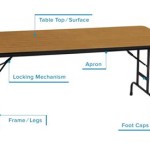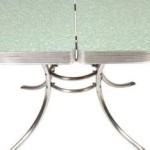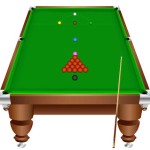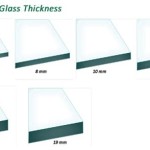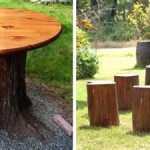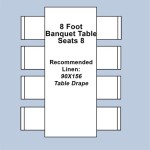How To Polish a Marble Table Top
Marble, prized for its elegance and timeless beauty, frequently graces tabletops in homes and offices. However, this porous natural stone is susceptible to scratches, stains, and dullness over time. Polishing a marble tabletop restores its original luster and protects it from future damage. This process, while achievable at home, requires careful preparation, the correct tools, and a methodical approach. This article provides a comprehensive guide on how to properly polish a marble tabletop, ensuring a professional-looking finish.
Before initiating the polishing process, it is crucial to assess the condition of the marble. Identifying the types of imperfections, such as light scratches, etching from acidic substances, or deep stains, will dictate the necessary steps and the required materials. A severely damaged tabletop may necessitate professional restoration.
The first step in any polishing endeavor is thoroughly cleaning the marble surface. This removes surface dirt, grime, and any loose debris that might interfere with the polishing process. A gentle, pH-neutral marble cleaner is recommended. Avoid using harsh chemicals, abrasive cleaners, or acidic solutions, as these can further damage the marble.
Apply the cleaner liberally to the tabletop and allow it to dwell for a few minutes, according to the manufacturer's instructions. Scrub the surface gently with a soft cloth or sponge, paying particular attention to areas with visible dirt or stains. Rinse the surface thoroughly with clean water to remove all traces of the cleaner. Finally, dry the tabletop completely with a clean, lint-free cloth.
Key Point 1: Essential Tools and Materials
Successful marble polishing hinges on having the right tools and materials. This includes a variety of polishing compounds, polishing pads, and appropriate machinery. Substituting inferior products can lead to unsatisfactory results and potentially damage the marble.
Polishing Compounds: Marble polishing compounds are available in various grits, ranging from coarse to fine. Coarse grits are used for removing deeper scratches and imperfections, while finer grits are used for refining the surface and achieving a high gloss. It is essential to select the appropriate grit based on the severity of the damage. A multi-step polishing process using progressively finer grits is generally recommended.
Polishing Pads: Polishing pads are typically made of felt, diamond, or foam. Felt pads are ideal for applying polishing compounds and achieving a final polish. Diamond pads, which contain embedded diamond particles, are more aggressive and effective for removing heavier scratches and etches. Foam pads are suitable for applying sealers and waxes.
Polishing Machine: While hand polishing is possible, a polishing machine significantly reduces the time and effort required. Variable-speed polishers are preferred, as they allow for precise control over the polishing process. An orbital polisher is generally recommended, as it minimizes the risk of swirl marks.
Additional Materials: Other essential materials include: pH-neutral marble cleaner, clean water, soft cloths, lint-free cloths, painter's tape (for protecting surrounding surfaces), a spray bottle, safety glasses, and gloves.
Once the marble tabletop is clean and completely dry, prepare the work area. Cover any surrounding surfaces, such as floors and furniture, with drop cloths or plastic sheeting to protect them from splashing and debris. Use painter's tape to mask off any edges or trim that you do not want to be polished.
Next, apply a small amount of the polishing compound to the polishing pad. Start with a coarse grit compound if the tabletop has significant scratches or etching. If the surface is relatively smooth, begin with a medium-grit compound. Lightly dampen the pad with water using a spray bottle. This helps to distribute the compound evenly and prevents the pad from overheating.
Place the polishing pad on the marble tabletop and turn on the polishing machine. Use a slow, steady speed and apply even pressure. Work in small, overlapping sections, moving the machine in a consistent pattern. Avoid holding the machine in one spot for too long, as this can create uneven polishing and potentially damage the marble.
Continue polishing until the section appears smooth and uniform. Wipe away any excess polishing compound with a clean, damp cloth. Inspect the surface carefully to ensure that all scratches and imperfections have been removed.
Repeat the polishing process with progressively finer grit compounds, using a clean polishing pad for each grit. With each subsequent pass, the marble surface will become smoother and more reflective. Take the time to thoroughly clean the tabletop between each grit to remove any residual compound and debris.
After the final polishing step, use a clean, dry felt pad to buff the marble surface. This will further enhance the shine and remove any remaining residue. Buff the entire tabletop until it achieves the desired level of gloss.
Key Point 2: Addressing Specific Imperfections
Different types of imperfections require specific treatment during the polishing process. Understanding how to address these issues is crucial for achieving optimal results.
Light Scratches: Light scratches can often be removed with a fine-grit polishing compound and a felt polishing pad. Apply the compound to the pad and polish the scratched area in a circular motion. Repeat as necessary until the scratches are no longer visible.
Etching: Etching is caused by acidic substances, such as lemon juice or vinegar, reacting with the calcium carbonate in marble. This creates a dull, slightly textured area on the surface. Etching can be removed with a more aggressive polishing compound, such as a medium-grit compound, and a diamond polishing pad. Polish the etched area in a circular motion, gradually increasing the pressure until the etching is removed. Follow up with finer-grit compounds to restore the shine.
Stains: Stains can be more challenging to remove, depending on the type of stain and how long it has been present. For fresh stains, immediately blot up the spill with a clean cloth. Avoid rubbing the stain, as this can spread it further. For stubborn stains, a poultice may be necessary. A poultice is a paste made from absorbent materials, such as diatomaceous earth or baking soda, mixed with a solvent that is appropriate for the type of stain. Apply the poultice to the stained area, cover it with plastic wrap, and let it sit for several hours or overnight. The poultice will draw the stain out of the marble. Remove the poultice and rinse the area thoroughly with clean water. Repeat as necessary until the stain is removed. After the stain is removed, polish the area with a fine-grit polishing compound to restore the shine.
Deep Scratches: Deep scratches may require professional attention, as they can be difficult to remove without damaging the marble. However, if you choose to attempt to remove them yourself, start with a coarse-grit diamond polishing pad and gradually work your way up to finer grits. Be careful not to apply too much pressure, as this can create more scratches. Monitor the progress closely and stop if you are not seeing satisfactory results.
After polishing, sealing the marble tabletop is highly recommended. A marble sealer penetrates the pores of the stone and creates a barrier against future stains and damage. Select a high-quality sealer that is specifically formulated for marble. Apply the sealer according to the manufacturer's instructions, typically using a clean cloth or applicator pad.
Allow the sealer to dwell on the surface for the recommended time, then wipe away any excess. Depending on the type of sealer, multiple coats may be required. Consult the manufacturer's instructions for specific guidance.
Key Point 3: Maintenance to Preserve the Finish
Maintaining a polished marble tabletop requires regular cleaning and care. Proper maintenance will help to preserve the finish and prevent future damage.
Regular Cleaning: Clean the marble tabletop regularly with a pH-neutral marble cleaner. Avoid using harsh chemicals, abrasive cleaners, or acidic solutions. Wipe up spills immediately to prevent staining. Use a soft cloth or sponge to clean the surface, and avoid using abrasive pads or brushes.
Protecting the Surface: Use coasters under glasses and cups to prevent water rings and stains. Place placemats under dishes to protect the surface from scratches. Avoid placing hot items directly on the marble tabletop, as this can cause thermal shock and damage the stone.
Periodic Polishing: Over time, the marble tabletop may become dull or scratched again. Periodic polishing will help to restore the shine and protect the surface. The frequency of polishing will depend on the level of use and the type of care the tabletop receives. A light polishing with a fine-grit polishing compound and a felt polishing pad may be all that is needed to restore the shine. For more significant scratches or etching, a more aggressive polishing process may be necessary.
Proper polishing of a marble tabletop yields substantial aesthetic and protective benefits. By following these steps, one can restore the original luster of the stone and safeguard it against future damage. The key is to use the correct tools and materials, exercise patience, and maintain the tabletop regularly.

How To Clean Marble Table Top

How To Clean A Marble Table Pro Housekeepers

Polish Marble Table Top With Sandpaper And A Drill

How To Polish A Damaged Marble Countertop 6 Steps Instructables

How To Polish Marble Counter Tops By Hand

3 Ways To Clean A Marble Top Table Wikihow

How To Polish A Marble Coffee Table Wilmslow Manchester Polishers

Restoring And Polishing A Damage White Marble Countertop With Zoom Pads

How To Polish Marble A Complete Guide

How To Deep Clean And Re Clarity On Granite Marble Countertops

